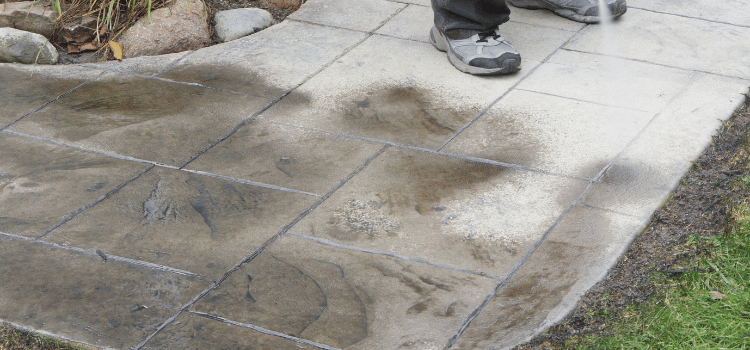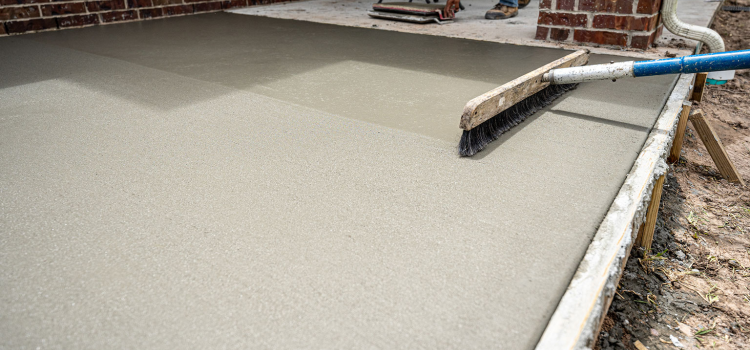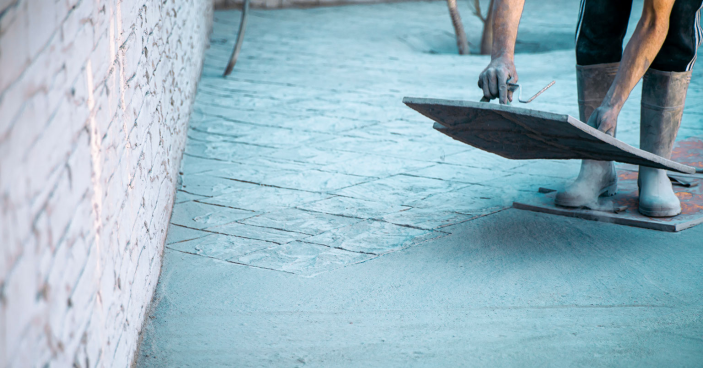With the right concrete paint or stain, you can completely transform patios, driveways, garage floors, and even indoor spaces.
Whether you’re going for bold color, earthy tones, or just a cleaner, fresher look, using concrete paint is a budget-friendly way to breathe new life into tired surfaces.
Let’s dive into how this works, what products to use, and the step-by-step process for getting it done.
Why Consider Paint and Stain for Concrete?

Before we get into how to stain or paint concrete, let’s talk about why you’d want to do it in the first place.
Concrete paint and stains are more than just cosmetic.
They can also:
- Protect your surface from moisture, oil, and wear
- Prevent dusting or chipping
- Add personality and curb appeal
- Make maintenance easier (no more dingy, dusty floors)
So what’s the difference between concrete paint and stain?
Concrete Paint sits on top of the surface like a coating, offering bold, solid color and some surface protection.
Concrete Stain penetrates into the concrete and reacts chemically (acid-based) or soaks in (water-based) for a more natural, mottled look.
Each one has its pros and cons, but if you’re looking for strong color and coverage, concrete paint is your go-to.
Tolls and Supplies You'll Need
Before you start slapping paint on your concrete, make sure you’ve got everything ready.
The prep is just as important as the painting itself.
Here’s what you’ll need:
- Concrete cleaner or degreaser
- Pressure washer or stiff scrub brush
- Painter’s tape and drop cloths
- Concrete etching solution (for smooth concrete)
- Concrete patch (for cracks)
- High-quality concrete paint
- Paint roller (with extension pole)
- Paintbrush (for edges)
- Sealer (optional but recommended)
How To Apply Concrete Paint
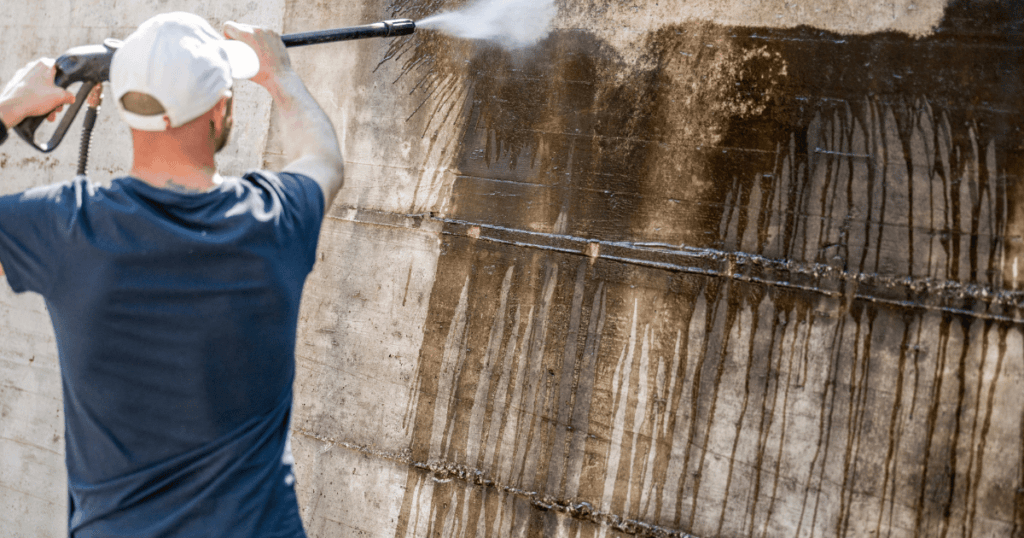
Ready to roll? Follow this simple guide for painting concrete that actually lasts.
1. Clean the Surface
First things first: clean like your paint job depends on it, because it does.
Use a degreaser or concrete cleaner to remove dirt, oil, and any gunk. If you skip this step, the paint won’t stick.
2. Etch the Concrete (If Needed)
If your concrete is super smooth, you’ll need to etch it.
This roughens the surface so the concrete paint has something to grip. Follow the directions on any etching product and rinse thoroughly.
3. Repair Cracks and Holes
Fill in any cracks or holes using concrete patch. Let it dry fully before painting.
4. Tape Off Edges
Use painter’s tape to protect trim, walls, and anything else you don’t want painted. Trust us, it’s worth the extra five minutes.
5. Apply the Concrete Paint
Use a roller for large areas and a brush for corners and edges. Work in small sections and use thin, even coats.
Pro Tips:
Two thin coats are better than one thick one.
Let the first coat dry completely before adding the second.
Let It Cure
Don’t rush this. Let the paint cure according to the manufacturer’s instructions, usually 24 to 72 hours.
Seal the Surface (Optional but Smart)
A concrete sealer adds extra protection, especially if the surface sees a lot of traffic or weather exposure. Apply with a roller once the paint has cur
Tips For A Better Concrete Paint Job
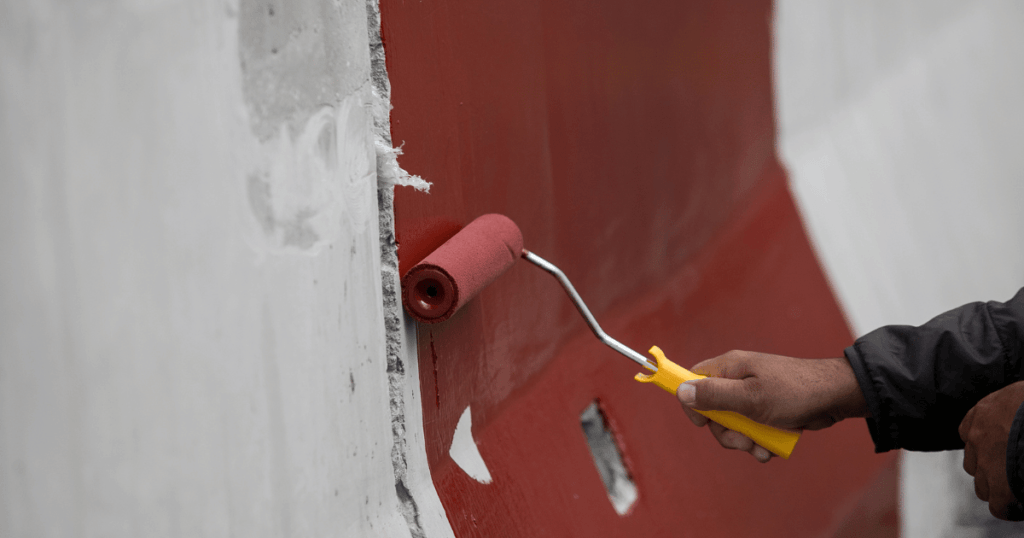
Want your new look to last? These simple tips can save you a ton of headaches down the road.
- Check the weather: Don’t paint on rainy days or in extreme heat.
- Don’t skip prep: Clean and etch thoroughly for better adhesion.
- Use high-quality paint: Cheap paint won’t last long.
- Ventilate indoor spaces: Concrete paint fumes can be strong, so crack a window!
- Testing: Test a small area first, especially if your concrete has never been painted before.
Maintaining Concrete Paint and Concrete Stain
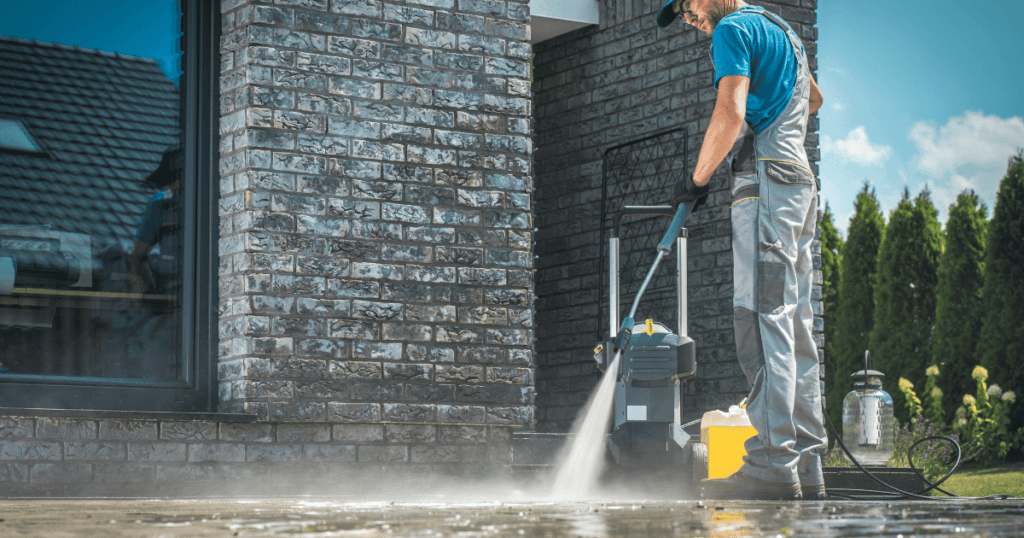
Once you’ve successfully transformed your concrete, maintaining the finish is essential for long-lasting beauty. Here are tips for caring for your painted or stained concrete surfaces:
Routine Cleaning:
- Regularly sweep away debris and promptly clean up spills to protect the finish.
- For deeper cleaning, use a mild detergent and a soft brush to avoid damaging the sealant or the paint itself.
Resealing (as needed):
- Reseal stained concrete every few years to maintain water resistance and prevent fading.
- Check for signs of wear on painted surfaces and touch up promptly to prevent further damage.
Refreshing the Finish of Concrete Paint:
- Recognize that no finish lasts forever, and occasional maintenance is normal.
- When substantial wear or color changes become noticeable, consider applying a fresh coat or completely redoing the surface.
Longevity and Vibrancy of Concrete Paint:
- Your efforts in maintenance contribute to the longevity and vibrancy of your space’s appearance.
- Choose a finish that resonates with you and aligns with your willingness to perform maintenance, ensuring many years of enjoyment with your beautifully transformed concrete surface.
Concrete Paint and Stain Summary
In conclusion, the journey of transforming concrete surfaces with paint and stain is a harmonious blend of aesthetics and functionality.
A successful application requires meticulous surface preparation and adherence to application techniques, ensuring a flawless and enduring result.




